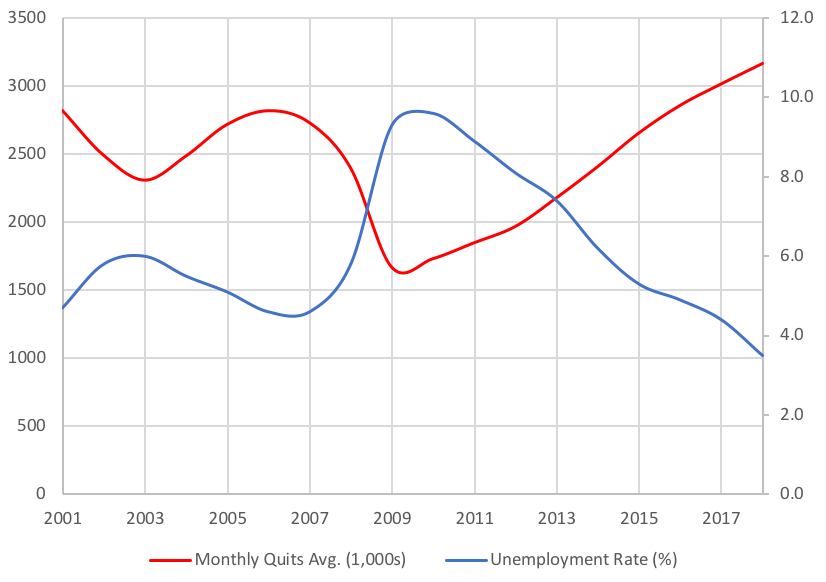Rising Employee Attrition Causes Companies to Rethink Site Selection & Economic Incentive Strategies
by King White, on Aug 21, 2018 10:30:50 AM
As the economy roars so does employee attrition across the U.S. Employees are choosing to leave their jobs at the fastest rate in decades. It is estimated that one in seven of the 6.1 million workers in the U.S. left their jobs in May 2018 to find another job. As a result, many companies are losing employees and struggling to fill job openings, which can create havoc when trying to evaluate locations during the site selection process or when trying to stay in compliance of economic incentive obligations. To help assess this emerging dilemma, Site Selection Group analyzed the employee turnover and unemployment trends to identify several ways to combat these new challenges.
Employee attrition has reached its highest level in 17 years
With unemployment now below 4%, the Department of Labor estimates that 3.4 million workers quit their jobs in the month of April alone. This employee turnover is happening across all industries including call centers, corporate headquarters, software development, manufacturing plants and distribution centers. It is an employee’s market right now as wages are escalating rapidly and as more employers are trying to expand. The following graph illustrates the correlated trend of employee “quits” and unemployment across the U.S.
Employee Turnover & Unemployment Correlation

Source: Bureau of Labor and Statistics, JOLTS
JOLTS data tracks employee attrition trends
A division of the Bureau of Labor and Statistics tracks demand-side indicators of labor shortages at the national level to assess the presence and extent of labor shortages in the U.S. This data measures the tightness of job markets, parallel to existing measures of unemployment. This data collects information on total employment, job openings, hires, quits, layoffs & discharges, and other separations of over 16,000 business establishments in non-agriculture businesses. The “employee quits” data on the graph above estimates the number of employees who left voluntarily with the exception of retirements or transfers. It basically evaluates employees who left their job for a position at another company — the No. 1 challenge for employers in a tight labor market.
How employee attrition impacts site selection decisions
When trying to decide where to locate or expand your company, labor availability is typically the top site selection factor evaluated since it is probably the most essential item to running a successful operation. You always look at the typical labor availability factors such as demographics, education levels, college graduates, unemployment, employee skills and other labor factors. Employee attrition is a very challenging data variable to find. JOLTS does have some data at the metro area level but not for all metro areas. As result, quality employer interviews have become critical to assessing your risks and making the site selection process more challenging due to the recent uptick in employee attrition at employers as they aggressively try to attract and retain employees.
How economic incentives affect the equation
There are two ways that employee attrition can impact economic incentives such as training subsidies, tax abatements, cash grants, tax credits and other employee-related economic incentives. First, if you are already in a location with existing economic incentive obligations, then you likely have to maintain a certain amount of employees to stay in compliance with your economic incentive obligations. So, if you have high employee turnover or can’t fill open positions, then you very likely may fall out of compliance. Second, if you are in the middle of economic incentive negotiations for a new project, then you need to make sure you can deliver on your commitment to create the jobs you are promising. Otherwise, you will fall short of your commitments and trigger economic incentive clawbacks.
Conclusions
Employee attrition can create major challenges for companies to be successful in a location, stay in compliance with economic incentive obligations and navigate the various geographies during the site selection process. There are ways to mitigate these risks through proven site selection strategies and comprehensive due diligence of labor markets. It is critical that you carefully evaluate labor markets if your company is going to successfully operate within a labor market.
